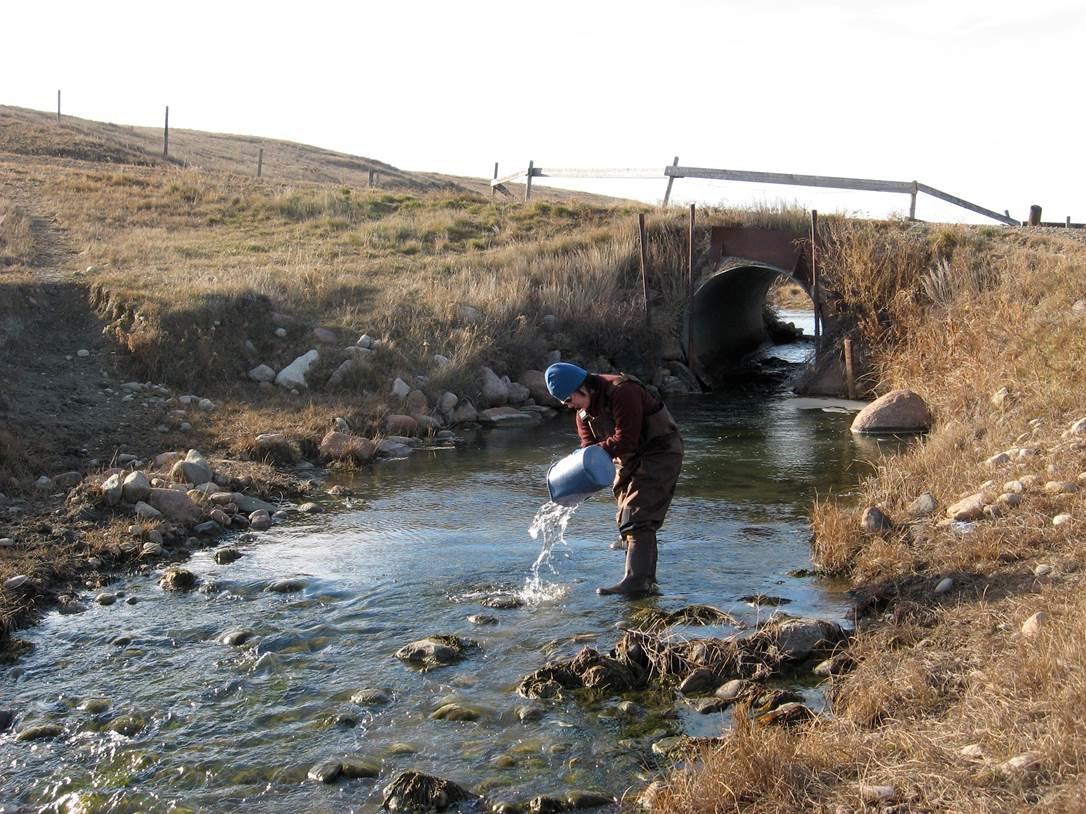March 21, 2014
Water researchers follow the trail of Alberta’s agricultural runoff

Bernhard Mayer tracks sources of nitrate in ground water and surface water in agricultural areas.
Every year, up to 65 per cent of the water consumed in Alberta is used in irrigation to grow a wide variety of crops and Bernhard Mayer is one of the researchers examining that water once it ends up back in the province’s rivers and aquifers.
The professor in the Department of Geoscience in the Faculty of Science, and research member of Advancing Canadian Wastewater Assets, tracks nitrogen in agricultural systems to see how much of it leaks either into ground water or surface water in areas that have agricultural land use.
“Internationally, nitrate is one of the most pervasive ground water pollutants because of intensive agriculture,” says Mayer. “Nitrate could be derived from synthetic fertilizers or from manure applications.”
He and his Applied Geochemistry research group use chemical and isotopic techniques to trace contaminants in surface and subsurface environments. He says southern Alberta is an excellent location to track agricultural pollutants in rivers because source waters from the mountains upstream hardly contain any nitrate.
“Nitrate contamination is much more severe in other places in the world,” he says. “But in other countries it’s often more difficult to come up with conclusive statements because there are so many sources of nitrate and nitrogen that’s been applied to agricultural landscapes for decades.”

Graduate student June Chao, who works with Bernhard Mayer’s research group, sampling the Bow river.
Monitoring our drinking water
In the Bow River below Calgary, Mayer’s group found the majority of nitrate in the water comes from urban waste water treatment plants and “only a relatively small proportion” from agriculture. “None of that is above drinking water limits so there’s no real worry in terms of drinking water quality,” he says.
In a study in the Oldman River basin in southern Alberta, where there are lots of feedlots, Mayer and his team found nitrate contamination in a non-drinking water aquifer and in tributaries to the Oldman River was derived from manure. “If feedlot operators spread manure on the fields in excessive amounts, it’s possible that some of this nitrate ends up in the ground water,” he says.
The amount of nitrogen allowed in drinking water is regulated — the maximum allowable concentration is 10 milligrams nitrate-N per litre — and given that Alberta’s agriculture industry is the largest user of water in the province, it’s important to monitor its effects.
“When it comes to nitrate pollution of surface water,” he says, “it’s always good to have a handle on which percentage of the pollution comes from which source.”
